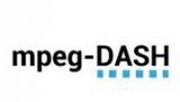MPEG DASH adaptive streaming standard proliferates at NAB

Just prior to NAB, the new ISO standard known as MPEG-DASH was officially published. DASH is an acronym standing for Dynamic Adaptive Streaming of HTTP, and the new standard is poised to replace proprietary technologies devoted to the same task.
The key advantage to dynamic streaming media is the ability to detect and efficiently utilize the available bandwidth, whether the client device is a television, laptop, game console, smartphone, tablet or other device.
According to Jan Nordmann, director of marketing and business development for audio and multimedia at Fraunhofer USA, this new standard will be a boon to content publishers by creating a single standard enabling files to play on all DASH-compatible devices.
“Fraunhofer was involved with the MPEG standardization process along with other companies, like Microsoft and Qualcomm,” he noted. “The idea was to have an interoperable solution for service providers and device manufacturers to do adaptive streaming. In this context, that means seamlessly adjusting the bit rate to deliver the best possible quality for the available bandwidth.”
Nordmann notes that the new DASH standard as one that is ripe for further major success, as it is codec-agnostic, and is already widely supported within both Windows 7 and as part of the Mac OS. MPEG Dash is also supported by the current versions of the Safari, Chrome and Internet Explorer web browsers, with Firefox support rumored not far behind.
The advantages of dynamic adaptive streaming was well demonstrated in the Fraunhofer booth. High-quality audio samples by jazz artist Grover Washington Jr. and Steely Dan’s Donald Fagen were played, with bit rates changing every few seconds. Showing the efficacy of one of Frauhofer’s MPEG-DASH compatible codecs, HE-AAC (High Efficiency AAC). Bit-rate changes from 320kb/s down to 64kb/s were audibly indistinguishable from one another. Even accounting for the high audio interference present on the NAB show floor, this observer was stunned at the degree of fidelity available and the lack of apparent transition across these very disparate rates.
And things promise to get even better. Fraunhofer has added a new codec to its AAC family, called Extended High Efficiency AAC, which promised improved audio quality at bitrates as low as one kbps for a mono channel, allowing good audio quality for both speech and music signals.
According to Nordmann, “It’s an even more efficient version of the established high efficiency AAC codec. And, it basically makes speech codecs obsolete.”
Because it is codec-agnostic, the new MPEG DASH standard is being enthusiastically embraced by the entire digital media community. Around the show floor, several exhibitors identified themselves as part of the “DASH Promoters Group” and offered information and demonstrations. Notable among them were Fraunhofer, Dolby Laboratories, DTS, Microsoft, Ericsson, Harmonic and Thomson Video Networks.
Fraunhofer IIS, winner of the 2012 NAB Technology Innovation Award for its revolutionary Dialogue Enhancement system, is a German-based global scientific research company with a strong history of developing and marketing some of the most successful codecs on the market. Its Advanced Audio Coding (AAC) family of products is found in over 5 billion devices, with native support for H.264, MPEG-4 and, now, MPEG DASH transport.
Get the TV Tech Newsletter
The professional video industry's #1 source for news, trends and product and tech information. Sign up below.
